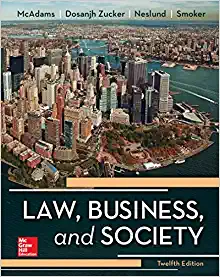Question
1.Which of the following is correct regarding the recognition of inventories? a.Inventories are recognized only when legal title is obtained. b.Inventories are recognized only when
1.Which of the following is correct regarding the recognition of inventories?
a.Inventories are recognized only when legal title is obtained.
b.Inventories are recognized only when they meet the definition of inventory and they qualify for recognition as assets.
c.Inventories include only those that are readily available for sale in the ordinary course of business
d.Inventories are recognized only when the buyer has taken physical possession over the goods.
2.When accounting for inventories,
a.The form of the sales contract is more important than its substance
b.The agreement between the seller and the buyer is considered in determining the timing of transfer of ownership over the goods
c.The sales contract is ignored because ownership over inventories is transferred only upon receipt of delivery by the buyer
d.A journal entry is made only upon recipt of the delivery by the purchaser
3.Who owns the goods in transit under FOB destination?
a.Buyer
b.Seller
c.Either a or b
d.None
4.Which of the following should be excluded from an entity's inventories?
a.Merchandise displayed in the sales department
b.Goods contained in the warehouse
c.Goods in- transit purchased under FOB destination
d.Goods in- transit purchased under FOB shipping point
5.Which of the following is included In an entity's inventories?
a.Damaged and worthless merchandise
b.Goods sold under a sale with repurchase obligation
c.Goods in transit sold under FOB shipping point
d.Goods purchased under a "lay-away" sale, physical possession over the goods in not yet obtained
6.Which of the following may be included in an entity's inventories?
a.Goods received under consignment sale
b.Goods purchased under a "bill and gold" sale, billing is obtained and the goods are already segregated but the delivery is deferred as per the entity's request
c.Goods sold where large returns are expected
d.All of these
7.Which of the following is excluded from an entity's inventories?
a..consigned goods delivered to another entity
b.Raw materials borrowed from another entity to be replaced with similar raw materials in the future
c.Merchandise sold under FOB shipping point, located in the warehouse awaiting shipment
d.Inventories sold under installment sale whereby the entity retains legal title soley to protect the collectability of the transaction price
8.Under this shipping cost arrangement, the seller pays in advance the freight before shipment.
a.Freight collect
b.Freight prepaid
c.FOB shipping point
d.FOB destination
9.The cist if consigned goods includes
a.Transportation cost incurred in delivering the consigned
b.Repair costs for damages the goods during shipment
c.Advance commissions given to the consignee
d.All of these
10.Which of the following is an objective of inventory accounting according to PAS 2 inventories?
a.The proper recognition of cost of inventory that is charged as expense when the related revenue is recognized
b.The proper representation of cost of inventories recognized as assets in the financial statements
c.A and B
d.None of these
11.Under this inventory system, a physical count is necessary before profit is determined
a.Perpetual
b.Periodical
c.Under no such system
d.Periodic
12.Under this inventory system, a physical count necessary only for internal control purposes
a.Perpetual
b.FIFO
c.under no such system
d.periodic
13.inventories are measured at
a.cost
b.net realizable
c.replacement cost
d.lower of a and b
14.ENDEAVOR TO TRY Co. purchased goods on account with a list price of 10,000 and the following terms: 20% 10%, 2/10, n/30. If ENDEAVOR uses the net method of accounting for cash discounts, the amount debited for the purchases is computed as
a.10k x 80% x 90% x 98%
b.10k x 20% x 10% x 2%
c.10k x 80% x 90%
d.10k x 90% 80% x 89%
15.According to PAS 2 inventories, the best evidence of the net realizable value of raw materials is
a.Estimated selling price costs to sell
b.Estimated selling price less costs to complete, and costs to sell
c.Replacement cost
d.Fair value costs to sell
16.Reversals of the inventory write- downs
a.Are not prohibited under the PFRSs.
b.Should not exceed the amount of write- down previously
c.Are always recognized
d.All of these
17.Under the gross method of recording purchases,
a.A cash discounts are initially ignored and are recorded only when taken
b.Cash discounts are deducted from the cost of inventory on initial recognition
c.Cash discounts not taken are debited to a "purchase discounts lost" account
d.A and C
TRUE OR FALSE
1.If the gross profit rate based on sales is 36% the gross profit rate based on cost is 26.47%.
2.If the gross profit rate based on cost is 40%, the gross profit rate based on sales is 28.57%.
3.If the gross profit rate based on sales is 25%, the cost ratio is 75%.
4.If the gross profit rate based on cost is 35%, the cost ratio is 62.46%
5.During the year, an entity had net purchases of 100. If inventories increased by 20 at the end of the year the cost of goods soldl must be 120
Step by Step Solution
There are 3 Steps involved in it
Step: 1

Get Instant Access to Expert-Tailored Solutions
See step-by-step solutions with expert insights and AI powered tools for academic success
Step: 2

Step: 3

Ace Your Homework with AI
Get the answers you need in no time with our AI-driven, step-by-step assistance
Get Started


